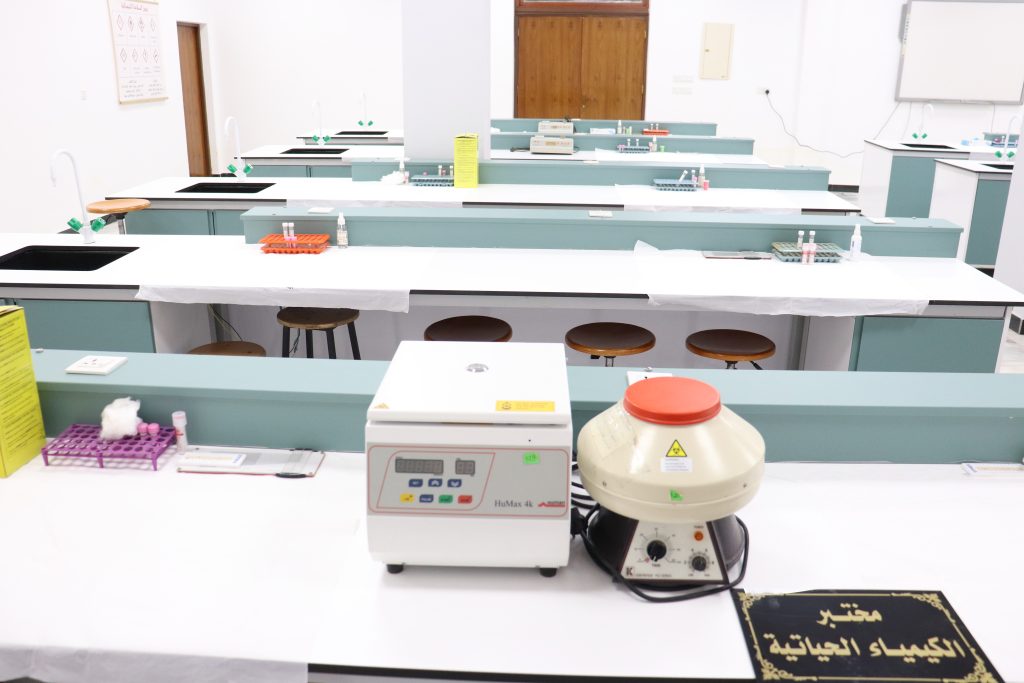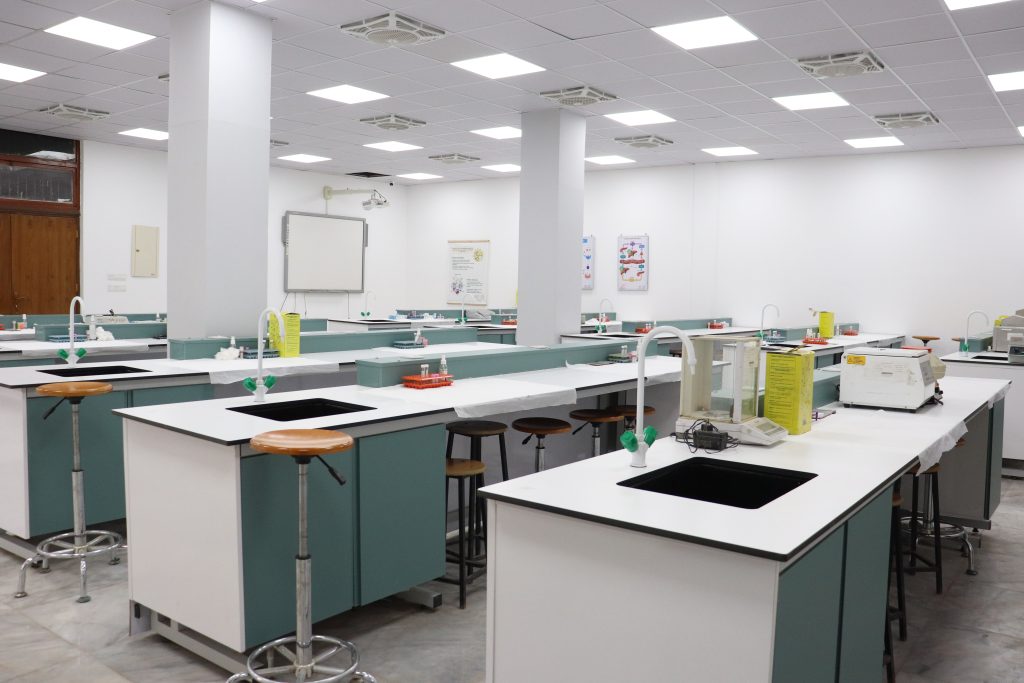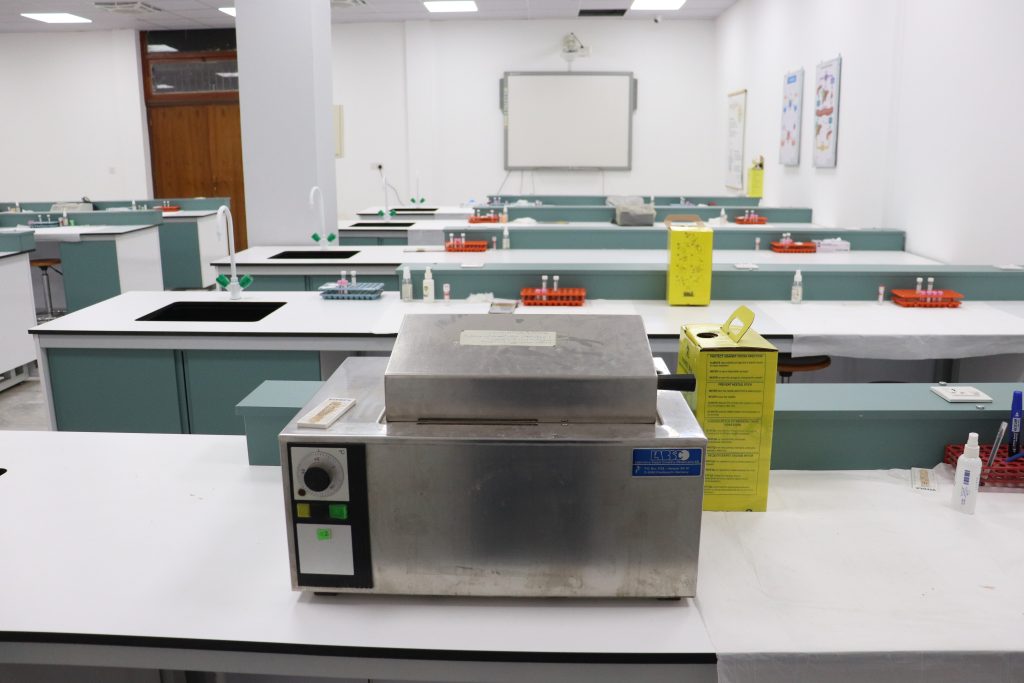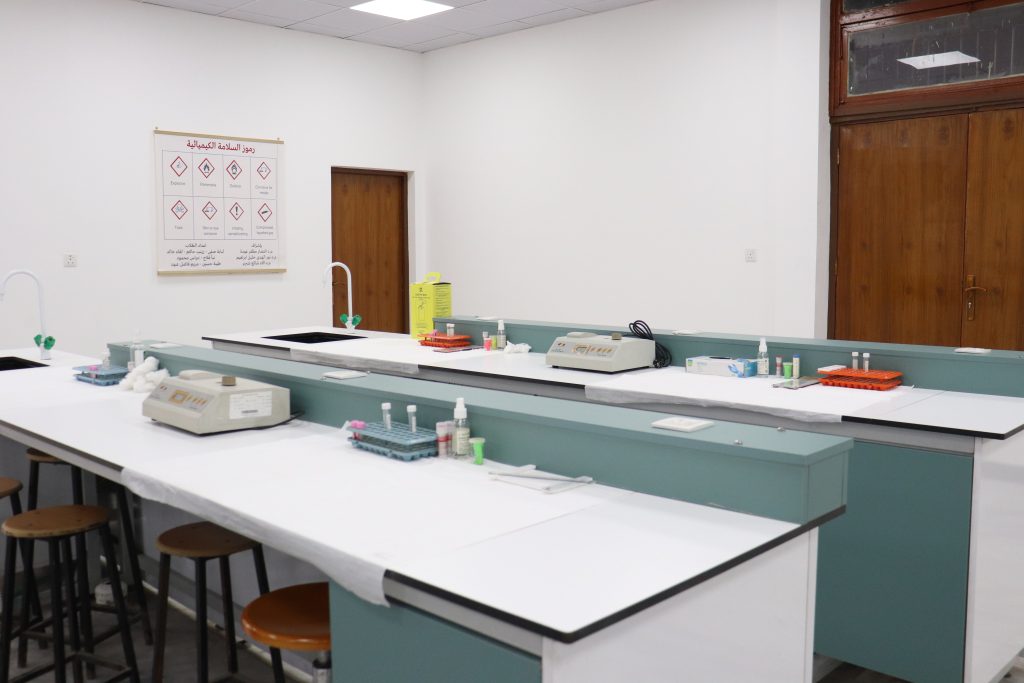Introduction to the Laboratory
The Faculty of Nursing is one of the applied science faculties that relies heavily on practical laboratories to qualify and prepare students to acquire nursing skills before applying them in the field. Within hospitals and health institutions, the theoretical aspect is integrated with the practical aspect.
Experience has shown that good preparation of nursing students in practical laboratories helps bridge the gap between theory and practice and boosts students’ self-confidence.
There is no doubt that providing an environment that mimics that of hospitals and health institutions by ensuring that laboratories are equipped in a manner that closely resembles those institutions will contribute to raising the professional and technical performance of nursing students. This is what drives the college to strive to keep up with everything that is new and appropriate for the times.
Vision, Mission, and Objective
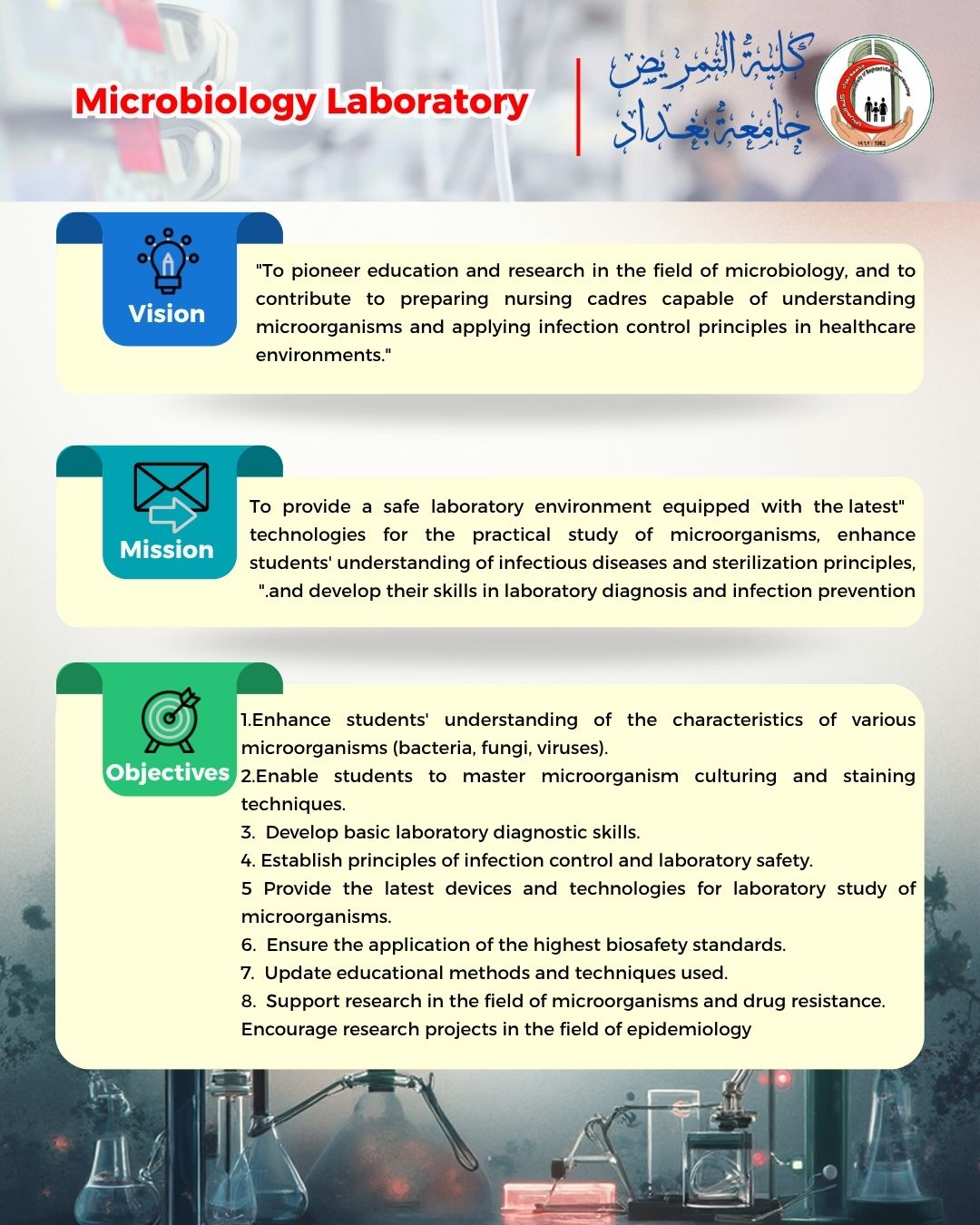
Photos of the Microbiology Laboratory
General objective
- Building scientific foundations for nursing students in the field of microbiology in its various branches.
Conveying a clear idea to students about the most important microorganisms (bacteria, parasites, etc.) that cause diseases and identifying their life cycles, methods of diagnosis and treatment, prevention, and control.
Vision for the Microbiology Laboratory
- Help nursing students learn about practical microbiology and use it in their nursing work.
Introduce students to the latest developments in microbiology in terms of modern techniques for diagnosing and treating diseases caused by microorganisms.
Give students a clear idea of the most important modern techniques in the field of sterilization and disinfection and the use of the correct scientific method in this field to limit and prevent diseases caused by microorganisms in the halls and departments of health institutions.
Message from the Microbiology Laboratory
This laboratory is one of the most important laboratories for nursing students, as it helps students gain a practical understanding of microbiology and learn about the causes of diseases from various microorganisms such as bacteria, parasites, fungi, viruses, and others.

